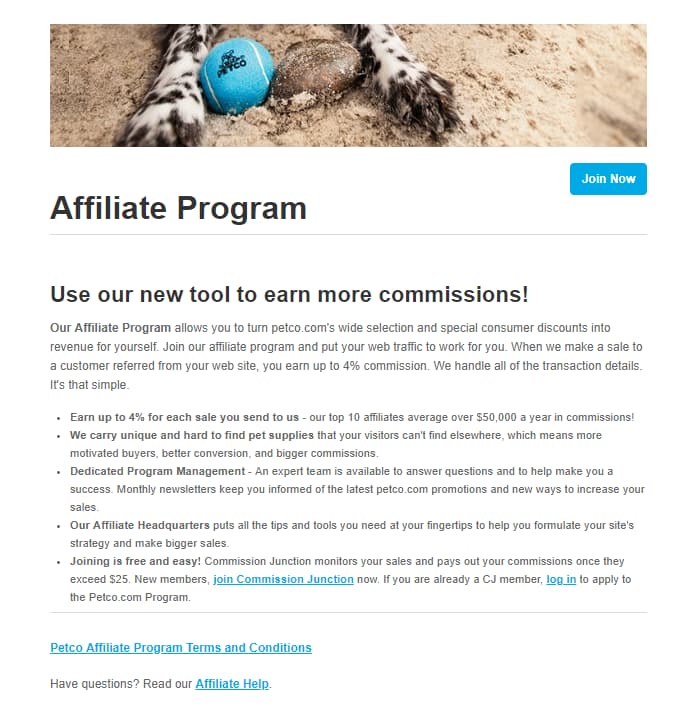Want to quit your boring 9-5 and get away from the rat race? Maybe you just hate Monday mornings and wish you could sleep through until Tuesday. Well, now you can, by following our quick guide to starting your affiliate marketing business from scratch.
Millions of people around the world wake up every day and force themselves to travel through traffic, rain and crowds just to spend all day sitting in a cubicle doing something they hate. And even while there are better opportunities out there, it’s only a handful that actually has the courage to take the leap and make a positive change in their lives.
Even though their lives are miserable, they have a routine, and it’s hard to break loose. The fear of losing a paycheck and security is enough to keep most people from taking a risk and following their dreams. After all, as the saying goes, ‘you’re only ever two paychecks away from becoming homeless’. However, who dares wins, and it’s only ever the people who take risks who will gain everything.
What most people don’t realise is that you can limit the risk and still gain the rewards, making the transition a lot easier and a lot less scary.
Here’s how you can start your affiliate marketing business in 5 easy steps, without putting your life on the line.
Step 1: Find your Niche

The best way to find your niche is to work out what you know and what you enjoy. You’ll have a lot more motivation, knowledge and success if you build a business around an area in which you have expertise and interest.
Don’t choose a niche just because you think it will be more popular. In fact, the more specialised the better, as you will be able to target much more accurately and you will have far less competition.
Once you know the general niche, try to find pain points within it. If you have chosen an area that you know a lot about, then you can define the problems that you have had. For example, you might be a dog owner that has had problems with your dog barking or chewing the furniture. In this case, you could search for a solution which you can then market.
Once you start thinking about all of the little problems you’ve had over the years and the solutions you’ve searched for online, you’ll soon realise just how many opportunities there are to cash in on. However, it’s important to stay focused and stick to your niche. Once you have one product successfully marketed and you know how to do it, then you can repeat the process and start trying to build up more campaigns and strategies. Just make sure you get one off the ground to begin with.
Step 2: Get Yourself a Website

Getting a website should be a quick and easy first step, however, a lot of novice marketers spend way too long trying to choose the right domain name and making their website look amazing. Don’t!
Don’t spend a fortune on a cool domain name and don’t spend ages adding widgets and loads of pictures and colours etc. When you first get started keep it simple and don’t spend more than $10 on a domain.
WordPress is the usual choice for marketers, and while it can be a bit clunky at times, it allows you to set up multiple sites later down the line and gives you a lot of control. It’s definitely worth spending time to find out how WordPress works and the features it has so that you understand how customers will pass through your site and how to set up payment structures. It seems obvious, but most people really do focus on the aspects of their sites which don’t matter, without paying any attention to those that will actually be able to make them money.
At this stage, you really just want to focus on getting everything set up so that it is clear and easy to navigate. Pick simple colours and a simple layout and don’t worry about adding lots of unnecessary features. The only purpose of your website is to sell! So make sure you tell people what you are selling and why.
Show your visitors the benefits of your product by highlighting the pain points they have in their lives and how your product provides the solution they have been looking for. Once you have done that, make sure that you have a clear CTA (call to action) so that they know exactly how they can buy your product.
Every page on your site should lead to a sale. If some of your pages don’t, then you should consider whether or not they are really necessary. You might want to tell people all about your company and why it’s great, but if it doesn’t help to convince people to buy from you then that information is only getting in the way and decreasing the chances of getting them over the finish line.
Another reason why you should keep your site as simple as possible when starting out is that adding loads of images and unnecessary elements to your site will increase your load time. This will result in you losing a lot of customer. In fact, according to Google, sites that don’t load within 6 seconds lose an average of 95% of their potential conversions!
Step 3: Find an Affiliate Program

Once you know your niche and have your website, you can start looking for an affiliate program. You can do this by either finding an affiliate network to work with or go direct to companies you already know.
If you’ve bought a product that you love and that is in your niche, then that could make a great place to start. To find out if they have an affiliate program, simply google the name of the company + affiliate program and you should find the results you are looking for.
A lot of large companies use affiliate networks like Commission Junction. However, they often offer deals if you sign up to their affiliate program via their website. For example, PetCo offers this deal for new affiliates:

Therefore, it’s worth finding out if your chosen product supplier has an affiliate program using their website, rather than going via the network.
There are thousands of offers available online, so make sure you do a little research first into which ones are likely to be the most lucrative. If you sign up with an affiliate network, check if they can assign managers to you or not. If they do, it means you can get advice and tips on the hottest offers and how to promote them. Here at Converting Team, we assign managers to all our affiliates.
Once you have your chosen offer, you will be given an affiliate link which you can then use on your website. Any traffic from your site to the end sale will then be credited to your account, and you’ll earn a commission every time a customer makes a purchase as a result of your promotion.
Step 4: Start Tracking

Once you’ve got your website and your chosen offer set up, then you’ll need to start tracking to see how people are interacting with your sales funnel. For this, you can use Google Analytics and Google Search Console. These will show you how people are interacting with your site and highlight areas where you can improve.
You’ll want to focus on streamlining your funnel to reduce the bounce rate and increase your conversion rate. If you have pages on your site where you lose a lot of people, then you can begin optimising them to ensure they stay interested.
The things a lot of people underestimate when they first start out are their headlines and the content which appears ‘above the fold’. The ‘above the fold’ section of any webpage is the part that people see before they start scrolling down. If there is no content to keep them hooked at first glance, then a lot of people will simply go back or switch to another website. Therefore, it’s important to make sure that you grab their attention straight away.
You can get people’s attention by putting a simple but bold headline at the very top of your page, to let people know that they are in the right place and that they will find answers to the question that took them there in the first place.
Another thing which you’ll need to consider is how your site will look for mobile users. In the US, mobile users are projected to make up 54% of all e-commerce sales by 2021. To date, they already account for almost 45% of the sales share.

Step 5: Get Creative

Once you’ve got everything up and running then it’s time to start getting creative and discover new ways to target your audience. This will take time, so don’t rush.
You can start by using tools like Facebook Insights to find out what related interests your consumers have and then tailoring your campaigns to those. To see our guide on how to get inspired for your creative campaigns using Facebook Insights, Click Here. (https://convertingteam.com/blog/expand-your-lookalike-audience/)
As you start to expand your business, you’ll probably find that you want to experiment with different traffic sources and media. However, when doing this, make sure you research which options work best for your customers.
Facebook has really good targeting for video ads and they allow you to retarget customers based on how much of your videos they watch. However, videos aren’t for everyone and they can be really time consuming. Therefore, try to find out where your audience spend most of their time.
You can grow your audience by looking at other affiliates in your niche and uncovering the keys to their success. Once you know your competition, then you can experiment using their content as inspiration. However, it’s important not to copy.
Not only is copying other people’s content bad practice, but it also means that your audience will most likely have seen it before, so it won’t have the same impact. To emulate success, it’s much better to take the underlying concepts of what your competitors are doing, rather than just copying and pasting their material.
If you see that your competitor is doing dog training videos to help lead their audience to a sale, then the underlying concept is that people want all-round information on how to be better dog owners. Now you can start thinking of other ways to get similar information to your audience. For example, you could create a how to guide, or you could make similar videos that go into more detail and show off different skills. As long as the content you produce is clearly original then your audience will be much more likely to engage and trust that you know what you’re talking about. This will then increase the likelihood of them purchasing products from you.
Conclusion

When you first start out on your journey to becoming an affiliate, set yourself small goals at first and make sure you complete all of the basic steps. Don’t get distracted by the bigger picture at the beginning. It will all come eventually, but you need to be patient.
Build each little bit up and learn to navigate every hurdle. Your journey may look something like this.
Week 1
Research niches and find one which interests you enough to devote an hour a day to.
Week 2
Build a basic website using WordPress
Week 3
Explore offers and find one which you are knowledgeable about. It should also be one that you yourself would be willing to buy. If you would buy it and you know why, then you can tell others why they should buy it too.
Week 4
Put your offer on your site and Implement your tracking tools and start trying to understand the data and what you could be doing differently.
Week 5
Start experimenting and optimising based on your data. Look at new ways to get people to come to your site. Look at social media platforms like Facebook and Instagram and learn more about your audience and their interests. Set up an ad account on Facebook and try running a campaign to see if you can drive more traffic to your site.
When it comes to affiliate marketing, you need to be patient and stay focused. Don’t give up your day job until you are sure you’ve got things working. If you do decide to quit your job and go full-time, then make sure you are making a decent profit first. As a safety net, make sure you have money aside for rent and food for at least 3-4 months, and enough left over to run your campaigns.
Most affiliates make a loss when starting out, so you’ll need to account for that too. However, if you can stick with it for long enough and use your data to optimise, then you will eventually become successful. Just be sure not to rush into things and burn too many bridges before the profits start rolling in.

